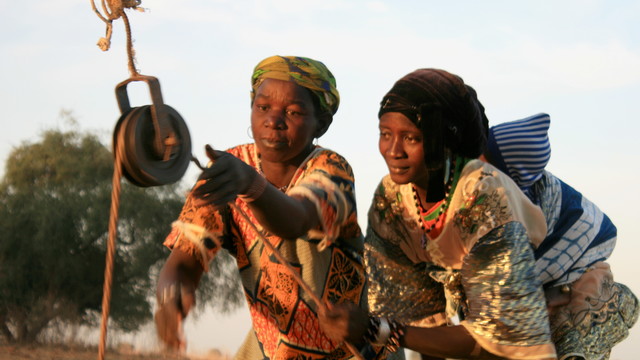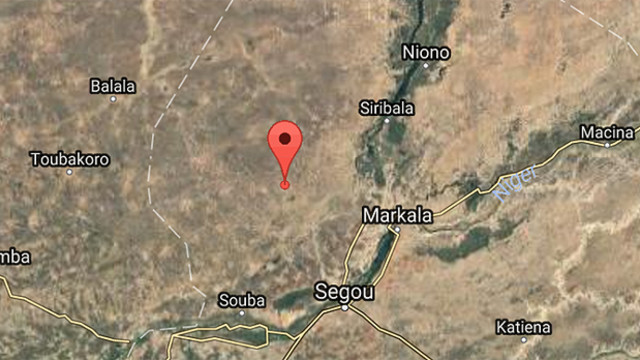The end of desertification?
Two experts with long experience of drylands research argue that a common narrative about the expansion of deserts is fundamentally misguided.



A key characteristic of dryland environments is their variability. Rural dryland communities have learned how to endure and exploit this (Photo: IIED)
Decades of low rainfall and severe drought in the Sahel from the late 1960s to the 1990s were the most dramatic example of climate variability in the 20th century. Until recently one word – desertification – summarised the causes and effects of these droughts.
From the 1970s onwards, it was the Horn of Africa and Sahel droughts that introduced desertification to a worldwide audience. Eventually this created political pressure to forge an international convention and permanent United Nations agency to combat desertification, the United Nations Convention to Combat Desertificiation (UNCCD).
This effort to combat desertification continues today. The UN Environment Assembly – the highest level of governance of international environmental affairs in the UN system – is currently processing a major policy statement on combating desertification, land degradation and drought, and promoting sustainable pastoralism and rangelands (PDF).
But all this work poses a problem. There is now overwhelming evidence that neither local land mismanagement nor overpopulation caused the Sahel droughts at the end of the 20th century, nor did these activities set in motion a self-reinforcing process of environmental decline.
If desertification denotes an environmental crisis of irreversible degradation on a subcontinental scale, then desertification in the Sahel never happened.
A slippery idea
The inability of desertification to explain social and environmental change in the Sahel is not an isolated case. The concept of desertification, it can be argued, has ceased to be analytically useful and distorts our understanding of social-environmental systems and their resilience, particularly in countries with variable rainfall and persistent poverty.
For better policy and governance, we need to reconsider the scientific justification for international attempts to manage drylands by combating desertification.
The original image of desertification referred to 'desert encroachment', a scary metaphor easily pictured as scenes of withering vegetation followed by the arrival of windblown sand. By the 1990s, however, the desertification metaphor in its original, literal concreteness had become difficult to defend against contrary scientific evidence.
A new UNCCD definition emerged that equated desertification with dryland environmental decline, irrespective of its permanence, cause or similarity to desert conditions. This omnibus definition bridged the gap between developed and developing African countries in the negotiations that led to the desertification convention and subsequently helped to hold the UNCCD together as an institution.
Yet the vagueness that made it politically acceptable has rendered the UNCCD version of desertification unworkable as a basis for quantification and mapping on a global scale.
Existing global maps of desertification are often based on subjective assessments by experts. These maps cannot be replicated or used for monitoring. There is no general agreement between the global map sets produced by different agencies at different times. Likewise there is no strong correlation between levels of desertification depicted in the maps and the environmental variables thought to cause degradation.
Local versus global perspectives
The desertification image has been an effective way to appeal for public funding, but it remains a journalistic simplification that lacks the precision needed for the pursuit of reliable science.
It is also becoming increasingly difficult for observers to attribute dryland environmental change to regional land use alone, or to distinguish confidently between the effects of local and global influences.
Our evolving understanding of the Sahel drought of the 1970s and 80s indicates this shift in perspective. Unbeknown to observers at the time, the Sahel droughts were an early manifestation of global climate change caused by industrial air pollution, rather than environmental mismanagement by those who lived in the Sahel.
The Sahel is not an isolated case. What we now recognise as global climate change calls into question the concept of desertification as a distinct, regional form of dryland degradation that can be understood or managed in isolation from change on a planetary scale.
The false pursuit of stability
Desertification is also out of step with recent advances in the environmental sciences. In the 1970s, scientists generally assumed that ecological systems were inherently stable; desertification was bad because it destroyed this stability. In the intervening decades whole new sub-disciplines have emerged that challenge the presumed 'balance of nature'.
From this perspective, perturbations – natural or man-made – are integral components of most ecological systems. The diversity of environments generated by these disruptions delivers a range of valued ecological services and has, in many instances, replaced a pristine and unchanging natural world as the goal of environmental management.
Finally there is the practical and political dysfunction that results from approaching drylands as primarily an environmental problem. Drylands cover about 40 per cent of the terrestrial globe. If they present environmental challenges, the drylands are also where many of us live and work, and have been doing so successfully for millennia.
If there is a single abiding characteristic of dryland environments, it is their variability from season to season, year to year, place to place and decade to decade.
Many rural dryland communities – including many very poor ones – have learned how to endure and exploit this variability. They are resilient. A more sympathetic understanding of this resilience and its environmental consequences could provide clues to how we can all adapt to an increasingly uncertain and variable climatic future for our planet as a whole.
Roy Behnke is an independent consultant, a research fellow of Imperial College London and partner in the Odessa Centre. Michael Mortimore is a geographer with a long experience of African drylands research, focused on northern Nigeria, Kenya, Senegal and Niger.
- For more discussion of the ideas summarised here, follow the link to the book The end of desertification? Disputing environmental change in the drylands, edited by the authors of this blog, Roy H. Behnke and Michael Mortimore, published by Springer in 2016.



